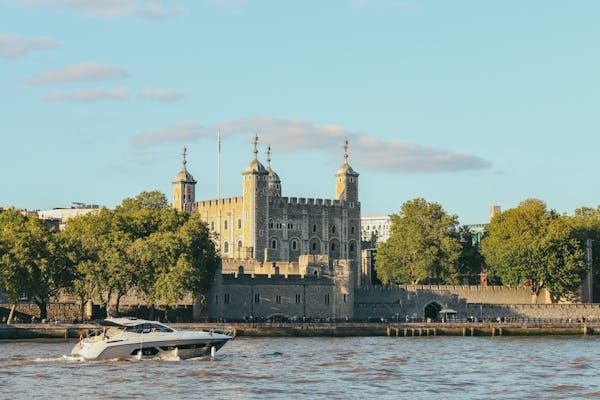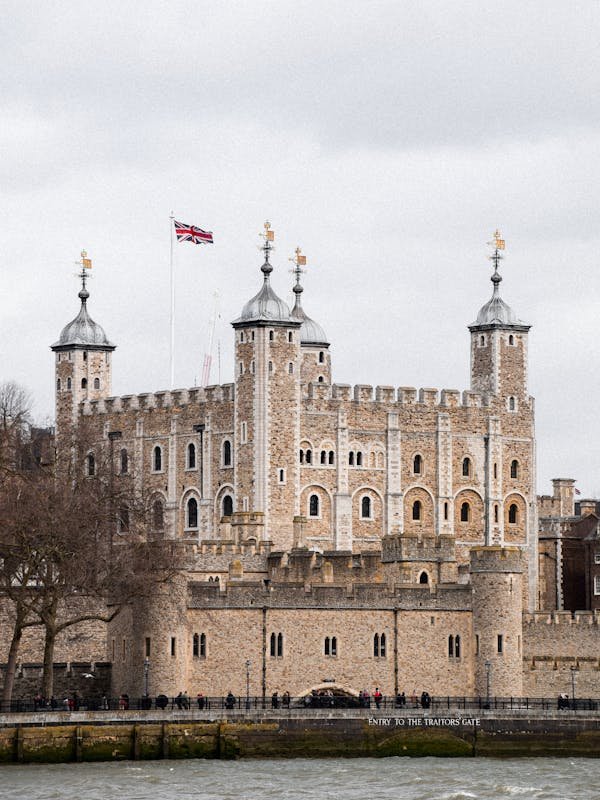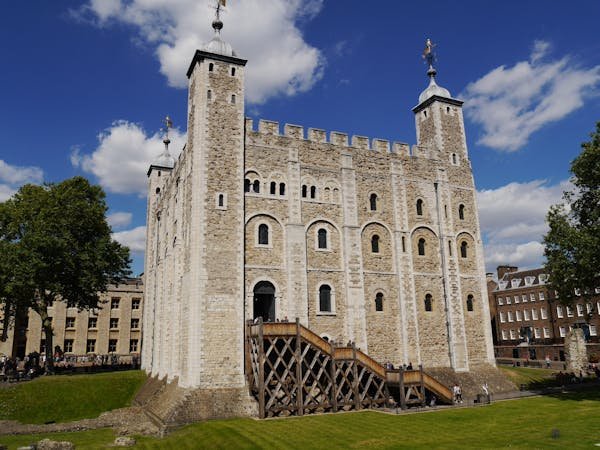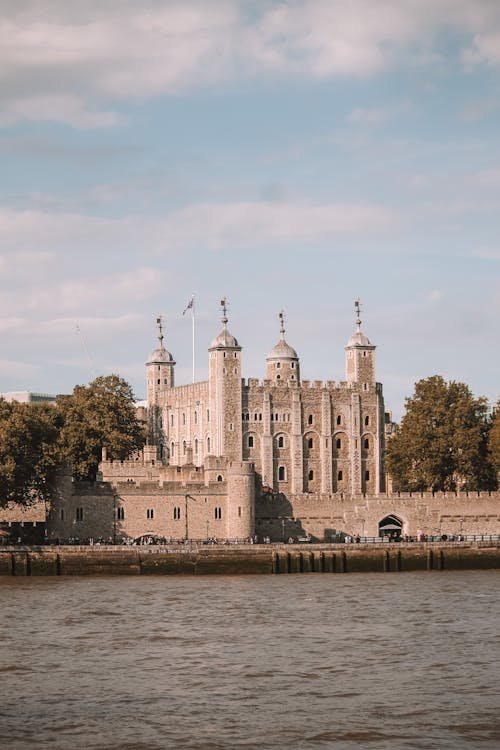The Tower of London: The Best Place to Visit in the UK
Introduction
The Tower of London stands as a monumental testament to the UK’s rich history, making it arguably the best place to visit in the country. Its iconic silhouette, with its imposing medieval architecture, beckons visitors from around the world to explore its storied past. Situated on the north bank of the River Thames in central London, the Tower of London has been a royal palace, a fortress, and a prison.
Its transformation from a royal residence to a grim symbol of imprisonment and execution is a central theme in British history. This extensive exploration will delve into the Tower of London’s history, architectural marvels, cultural significance, and the unique experiences it offers, cementing its status as the premier destination in the UK.
The Tower of London was founded by William the Conqueror in 1066 as part of the Norman Conquest of England. Initially built as a demonstration of power and a royal residence, it evolved over the centuries into a multifaceted fortress. The White Tower, the oldest part of the complex, was constructed in 1078 and remains one of the best-preserved examples of Norman military architecture.
The Tower’s role expanded over time, becoming a royal treasury, the royal mint, and eventually, a prison. The Tower’s history is marked by numerous significant events, including the imprisonment and execution of prominent figures such as Anne Boleyn and Thomas More. These events contribute to the Tower of London’s reputation as a site of both grandeur and sorrow. Its transformation from a royal palace to a symbol of both tyranny and justice makes it a focal point for those interested in the darker chapters of British history.
The Tower of London is an architectural marvel, showcasing a variety of styles and construction techniques from different historical periods. The White Tower, with its massive stone walls and crenellated battlements, is an excellent example of Norman military architecture. Its simplicity and strength reflect the strategic importance of the Tower during the medieval period. Another notable architectural feature is the Bloody Tower, infamous for its role in the imprisonment and execution of various historical figures.
The Tower’s medieval fortifications, including its defensive walls and moat, are impressive feats of engineering designed to protect the monarchy and the city of London. The complex also includes various towers such as the Beauchamp Tower and the Lanthorn Tower, each with its own unique history and architectural features.
## The Crown Jewels: A Symbol of British Royalty
One of the main attractions within the Tower of London is the Crown Jewels, which are displayed in the Jewel House. The collection includes the coronation regalia used in British royal ceremonies, including crowns, scepters, and orbs. The Crown Jewels are not only valuable in terms of their precious materials but also hold immense historical and cultural significance.
The Crown Jewels have been a symbol of the British monarchy for centuries, and their display at the Tower of London allows visitors to appreciate their beauty and craftsmanship. Highlights of the collection include the Imperial State Crown, the Sovereign’s Sceptre with Cross, and the Cullinan I diamond, also known as the Great Star of Africa. Each piece tells a story of British history and the traditions that have shaped the monarchy.
## The Tower as a Prison: Tales of Imprisonment and Execution
The Tower of London is perhaps best known for its role as a prison, and its history is filled with tales of imprisonment and execution. The Tower has housed many notable prisoners, including Anne Boleyn, the second wife of King Henry VIII, who was executed on Tower Green. Her ghost is said to haunt the Tower, adding to its reputation as a place of spectral activity.
Other famous prisoners include Lady Jane Grey, the nine-day queen, and Thomas More, the Chancellor who was executed for his refusal to accept Henry VIII’s separation from the Catholic Church. The tales of these prisoners, along with the Tower’s role in various plots and conspiracies, contribute to its dark and fascinating history. Visitors can explore the Tower’s prison cells and learn about the lives and fates of those who were held there.
## The Role of the Beefeaters: Guardians of the Tower
The Beefeaters, or Yeoman Warders, are the ceremonial guardians of the Tower of London. These iconic figures in their distinctive uniforms are responsible for overseeing the Tower and guiding visitors. The Beefeaters have a long history, dating back to the reign of Henry VII, and they play a crucial role in maintaining the Tower’s traditions and heritage.
In addition to their duties as guardians, the Beefeaters conduct guided tours and share their extensive knowledge of the Tower’s history with visitors. Their stories and anecdotes provide a personal touch to the visitor experience, making the Tower of London’s history come alive. The Beefeaters are also involved in ceremonial duties, including the annual Ceremony of the Keys, which marks the closing of the Tower’s gates each night.
## The Tower’s Role in Popular Culture
The Tower of London has been a prominent feature in popular culture, appearing in various films, television shows, and literature. Its dramatic history and iconic appearance have made it a favorite location for historical dramas and documentaries. Films such as “The Other Boleyn Girl” and television series like “The Crown” have used the Tower as a backdrop for depicting significant events in British history.
The Tower’s presence in popular culture helps to reinforce its status as a top tourist destination. By appearing in various media, the Tower of London captures the imagination of audiences and draws visitors eager to explore the real-life setting of their favorite historical dramas. This cultural significance adds to the Tower’s appeal and highlights its importance in both historical and contemporary contexts.
## Special Events and Seasonal Activities
The Tower of London hosts a range of special events and seasonal activities throughout the year, enhancing the visitor experience. These events include historical reenactments, educational workshops, and themed tours. During special occasions such as the annual Ceremony of the Keys, visitors can witness the traditional closing of the Tower’s gates, a practice that has been observed for centuries.
Seasonal activities, such as Christmas-themed events and summer tours, offer unique ways to experience the Tower. The Tower’s medieval architecture and historical ambiance provide a captivating backdrop for these events, allowing visitors to engage with the history of the site in a festive or seasonal context.
## The Tower’s Gardens and Natural Beauty
In addition to its historical and architectural significance, the Tower of London features beautiful gardens and natural landscapes. The Tower’s grounds include the Raven’s Court, where the famous Tower ravens reside, and the lovely moat, which has been transformed into a garden space. The gardens offer a tranquil escape from the bustling city and provide a contrast to the Tower’s more somber history.
Visitors can enjoy leisurely walks through these green spaces, taking in the beauty of the historic landscape. The gardens and moat also serve as a reminder of the Tower’s evolution from a military fortress to a site of natural beauty and relaxation. These spaces enhance the overall visitor experience, providing a well-rounded view of the Tower of London.
## Educational Programs and Tours
The Tower of London offers a variety of educational programs and tours designed to engage visitors of all ages. School groups and educational institutions can take advantage of specialized tours and workshops that focus on different aspects of the Tower’s history. These programs are tailored to align with educational curricula and provide a hands-on learning experience.
For general visitors, guided tours and audio guides are available, offering in-depth information about the Tower’s history, architecture, and notable events. The Tower’s expert guides provide valuable insights and answer questions, enriching the visitor experience. Educational programs and tours help to deepen visitors’ understanding of the Tower’s significance and provide a comprehensive view of its historical and cultural context.
## Accessibility and Visitor Amenities
The Tower of London strives to provide accessibility and amenities for all visitors. The site is equipped with ramps and elevators to accommodate those with mobility challenges. Accessible restrooms and designated viewing areas are also available to ensure a comfortable visit for everyone.
In addition to accessibility features, the Tower offers various amenities such as cafes and gift shops. Visitors can enjoy refreshments and purchase souvenirs, enhancing their overall experience. The availability of these amenities ensures that visitors have a pleasant and enjoyable visit, with everything they need to make their time at the Tower of London memorable.
## The Tower’s Role in Preserving British Heritage
The Tower of London plays a crucial role in preserving British heritage and cultural history. As a UNESCO World Heritage Site, the Tower is recognized for its historical significance and its contribution to the preservation of cultural heritage. The ongoing conservation efforts ensure that the Tower’s structures and artifacts are maintained and protected for future generations.
These preservation efforts include regular maintenance, restoration projects, and the protection of historical artifacts. The Tower’s role in preserving British heritage extends beyond its physical structures, encompassing the stories and traditions that have shaped its history. By safeguarding its past, the Tower of London continues to be a vital link to Britain’s rich cultural heritage.
### Unveiling the Depths of the Tower of London Experience
The Tower of London is more than just a historical landmark; it is a living chronicle of England’s past, an emblem of its regal heritage, and a vibrant cultural hub that continues to captivate visitors with its myriad stories and experiences. Each aspect of the Tower of London—its architecture,
its role as a royal residence and prison, its collection of Crown Jewels, and its ongoing cultural significance—contributes to its status as the best place to visit in the UK. Delving deeper into the Tower’s diverse facets reveals why it remains such an iconic and compelling destination.
**Historical Evolution and Architectural Intricacies**
The Tower of London’s architectural evolution reflects its changing roles over the centuries. Initially designed as a powerful symbol of Norman dominance, the White Tower, with its robust stone walls and imposing structure, was built to assert William the Conqueror’s authority over London. Its simplicity was deceptive; the White Tower was a marvel of medieval military design, intended to intimidate and defend against any potential threats.
As time progressed, the Tower’s architecture adapted to new needs. During the Tudor period, additional buildings and enhancements were made to accommodate the needs of the royal court. The addition of the outer ward and the construction of the Beauchamp Tower, with its distinctive architectural features, showcased the Tower’s evolving role from a military fortress to a royal residence.
The Tower’s walls and defensive structures are a testament to the advancements in military architecture over the centuries. The transition from simple stone walls to more elaborate fortifications mirrors the technological and strategic innovations of the medieval period. Visitors can appreciate these changes as they explore the Tower’s various towers and walls, each telling a different chapter of the Tower’s architectural history.
**The Enigma of the Crown Jewels**
One of the most fascinating aspects of the Tower of London is its collection of Crown Jewels. These precious artifacts are not merely valuable in terms of their material worth but are also laden with historical and cultural significance. Displayed in the Jewel House, the Crown Jewels include some of the most renowned regalia used in British coronations.
The Imperial State Crown, with its ornate design and a stunning array of gemstones, is one of the highlights. Its intricate craftsmanship reflects centuries of royal tradition and artistry. The Sovereign’s Sceptre with Cross, adorned with the Cullinan I diamond, also known as the Great Star of Africa, is another extraordinary piece that underscores the Tower’s role in preserving royal heritage.
The Crown Jewels are not just artifacts but symbols of the continuity and tradition of the British monarchy. Their presence at the Tower of London allows visitors to connect with the grandeur and history of British royalty. Each piece in the collection has its own story, adding layers of depth to the experience of viewing them.
**The Tower’s Role as a Prison: Stories of Suffering and Resilience**
The Tower of London’s role as a prison is a significant and often somber aspect of its history. Over the centuries, the Tower has housed numerous prisoners, many of whom were political or religious figures. The conditions in which these prisoners were held were often harsh and brutal, adding to the Tower’s reputation as a site of suffering.
Anne Boleyn, the second wife of Henry VIII, was imprisoned in the Tower before her execution. Her story, along with those of other notable prisoners like Lady Jane Grey and Thomas More, adds a poignant dimension to the Tower’s history. These individuals’ tales of imprisonment and execution are a stark reminder of the Tower’s role in the darker aspects of British history.
The stories of these prisoners are preserved in various parts of the Tower, including the Beauchamp Tower and the Bloody Tower. Visitors can explore the cells and learn about the lives of those who were held there, gaining insight into their experiences and the political and religious conflicts of their time. The Tower’s role as a prison is a crucial part of its history and contributes to its complex and multifaceted character.
**The Beefeaters: Custodians of Tradition**
The Beefeaters, or Yeoman Warders, are an integral part of the Tower of London’s daily life. Their distinctive uniforms and ceremonial duties make them one of the most recognizable aspects of the Tower. The Beefeaters have been a part of the Tower since the time of Henry VII, and their role has evolved from providing security to conducting guided tours and preserving traditions.
The Beefeaters are not only guardians of the Tower but also storytellers and educators. Their guided tours offer visitors a personal and engaging experience, filled with anecdotes and historical insights. The Beefeaters’ knowledge of the Tower’s history and their dedication to preserving its traditions enhance the visitor experience, making each tour a unique and memorable encounter.
In addition to their guiding duties, the Beefeaters participate in various ceremonial functions, including the Ceremony of the Keys, which marks the closing of the Tower’s gates each night. This centuries-old tradition is a fascinating aspect of the Tower’s daily routine and offers visitors a glimpse into the rituals that have been observed for generations.
**Seasonal Events and Cultural Activities**
Throughout the year, the Tower of London hosts a range of seasonal events and cultural activities that add to its appeal. These events include historical reenactments, educational workshops, and themed tours that provide visitors with unique opportunities to engage with the Tower’s history in different contexts.
For example, during the Christmas season, the Tower often features festive decorations and special events, creating a magical atmosphere that contrasts with its historical gravity. Summer events might include outdoor performances and historical reenactments that bring the Tower’s past to life in an engaging and entertaining way.
The Tower also hosts educational workshops and programs tailored to different age groups and interests. These activities are designed to deepen visitors’ understanding of the Tower’s history and provide hands-on learning experiences. By participating in these events, visitors can gain a more comprehensive appreciation of the Tower’s significance and its role in British history.
**The Tower’s Gardens and Natural Beauty**
In addition to its historical and architectural features, the Tower of London boasts beautiful gardens and green spaces. The Tower’s moat, which was historically a defensive feature, has been transformed into a garden area that provides a tranquil escape from the surrounding urban environment.
The gardens within the Tower grounds are meticulously maintained and offer visitors a chance to enjoy the natural beauty of the site. The Raven’s Court, home to the famous Tower ravens, is another notable area where visitors can appreciate the Tower’s wildlife and learn about the ravens’ role in its history and lore.
These green spaces enhance the overall visitor experience, providing a peaceful contrast to the Tower’s more dramatic historical elements. The combination of historical architecture and natural beauty makes the Tower of London a multifaceted destination that appeals to a wide range of interests.
**Educational Programs and Tours: Enhancing the Visitor Experience**
The Tower of London’s educational programs and tours are designed to cater to a diverse audience, from school groups to individual visitors. The programs are tailored to different educational levels and interests, providing valuable learning opportunities for all.
For school groups, the Tower offers specialized tours and workshops that align with educational curricula. These programs are designed to engage students with interactive activities and in-depth historical content. By participating in these educational experiences, students gain a deeper understanding of British history and the significance of the Tower.
For general visitors, the Tower provides a range of guided tours and audio guides that offer detailed information about the site’s history, architecture, and notable events. The expert guides share their extensive knowledge and personal insights, enriching the visitor experience and making the history of the Tower more accessible and engaging.
**Accessibility and Visitor Amenities: Ensuring a Comfortable Visit**
The Tower of London is committed to providing accessibility and amenities for all visitors. The site is equipped with features such as ramps and elevators to accommodate those with mobility challenges. Accessible restrooms and designated viewing areas ensure that all visitors can enjoy their experience comfortably.
In addition to accessibility features, the Tower offers various amenities to enhance the visitor experience. Cafes and gift shops provide refreshments and souvenirs, allowing visitors to relax and enjoy their time at the Tower. These amenities contribute to a pleasant and enjoyable visit, ensuring that visitors have everything they need to make the most of their experience.
**Preservation and Conservation Efforts**
The preservation and conservation of the Tower of London are crucial to maintaining its historical and cultural significance. Ongoing efforts include regular maintenance, restoration projects, and the protection of historical artifacts. These efforts ensure that the Tower remains in excellent condition and continues to be a valuable resource for future generations.
The Tower’s role in preserving British heritage extends beyond its physical structures. Conservation efforts also focus on safeguarding the stories, traditions, and artifacts that contribute to the Tower’s rich history. By protecting these elements, the Tower of London helps to ensure that its legacy endures and continues to inspire visitors from around the world.
**Conclusion: The Tower of London as the Premier Destination**
The Tower of London’s combination of historical significance, architectural splendor, and cultural richness makes it the best place to visit in the UK. Its evolution from a Norman fortress to a royal palace and prison reflects the complexities of British history, while its Crown Jewels and architectural marvels showcase the grandeur of the British monarchy.
The Tower’s role as a prison, its Beefeaters, and its presence in popular culture add depth and intrigue to the visitor experience. Seasonal events, gardens, and educational programs further enhance the Tower’s appeal, providing diverse and engaging experiences for all visitors.
As a symbol of British heritage and a beacon of historical and cultural significance, the Tower of London stands out as an unparalleled destination. Its rich history, stunning architecture, and ongoing preservation efforts ensure that it remains a top attraction for anyone interested in exploring the legacy of Britain’s past.
For those seeking an immersive and unforgettable experience, the Tower of London is truly the best place to visit in the UK, offering a journey through time that captivates and inspires. In conclusion, the Tower of London stands out as the best place to visit in the UK due to its rich history, architectural splendor, and cultural significance. From its origins as a Norman fortress to its role as a royal palace, prison, and symbol of British monarchy, the Tower offers a multifaceted exploration of British history.
The Tower’s architectural marvels, including the White Tower and its medieval fortifications, showcase its historical evolution and military importance. The Crown Jewels and their display in the Jewel House provide a glimpse into the grandeur of British royalty. The Tower’s role as a prison, with its tales of imprisonment and execution, adds a layer of depth to its historical narrative.
The Beefeaters, seasonal events, and popular culture references contribute to the Tower’s enduring appeal. The beautiful gardens and natural spaces offer a serene contrast to its more somber history, while educational programs and accessibility features ensure a comprehensive and enjoyable visitor experience.
The Tower of London’s role in preserving British heritage and its ongoing conservation efforts underscore its importance as a cultural landmark. Its combination of historical significance, architectural beauty, and engaging experiences make it a top destination for anyone interested in exploring the rich tapestry of British history. For those seeking the best place to visit in the UK, the Tower of London is an unparalleled choice, offering a captivating journey through time and an unforgettable experience.
‘’ONE OF THE MOST FAMOUS and Important Historical Sites in The UK is
the Tower of London, which has stood on the banks of the River Thames for
about a thousand Years. This Magnificent Castle, Which william the
Conqueror Established in 1066, as part Of the Norman Conquest of england,
has Served as A Royal Residence, A Prison, A Treasury, and the Home of the
crown jewels over the Course of its Long History
Origins and Early History
In an Effort to establish his power after the Norman Conquest, William the
Conqueror constructed the Tower of London in the late Eleventh Century. The
earliest Structure, Called the White Tower, was Completed By 1078. In
addition to acting as a potent defensive fortification, its central keep
symbolised Norman dominance over the Anglo-Saxons. Successive kings
expanded and changed the Tower over the ages, adding walls, moats, and
other structures, transforming it into an enormous complex
Royal Residence and Fortress
Formerly, The Tower of London served as a Royal home. Large-scale Homes
and strong defences were erected by kings like Edward I and Henry III, which
tremendously Contributed in the Construction of the Complex. The Tower’s
prime location by the Thames made it the ideal place for the Royal Family to
reside and be Safe amid unrest.
Prison and Place of Execution
The Tower of London is Most Recognised for its Service as a prison. It
Housed a lot of Well-Known Prisoners, Including Queens and members of the
nobility and Aristocracy. The “Nine Days’ queen,” lady Jane Grey, and henry
VIII’s second Wife, Anne boleyn, were Two of its Most Well-Known prisoners.
On Tower property, both were executed. Elizabeth is Imprisonment in the
Tower before her coronation Highlights the Tower’s importance in the Political
Intrigues of tudor england.
Edward V and His brother Richard, The Duke of York, are Known to have
been Housed in the Notorious Bloody Tower Prior to their mysterious
Disappearance, which has Baffled and captivated Historians for Centuries.
Home of the Crown Jewels
One of the Tower’s Most Enduring roles is guardianship of the Crown Jewels.
Two of the most priceless symbols of the British monarchy are the Imperial
State Crown, which the king dons during the State Opening of Parliament, and
the Sovereign’s Sceptre with Cross, Which is adorned with the Cullinan I, the
largest Colourless cut diamond in the World. The Crown Jewels are housed in
the Jewel House, the Most visited tourist destination in the world, and are
strictly protected.
Modern-Day Attraction
‘’The Tower of london, An Officially Designated UNESCO world Heritage Site,
is one of the Most Popular Tourist destinations in the united Kingdom.
Discover the interesting history of this Well-Known Site as You stroll Around
the medieval Walls, Explore the Medieval Architecture, and More.’’ The
Yeoman Warders, often known as Beef eaters, give tours and regale visitors
with Fascinating stories and traditions surrounding the Tower.A few of the
long-standing traditions of the Tower of London are being kept today, like the
nightly Ceremony of the Keys, Which has been Carried out for Centuries as a
means of fortifying the Castle.
Conclusion
One reminder of England’s turbulent and colourful past is the Tower of
London. The Tower represents a millennium of British history. It started as a
Norman fortress and has subsequently been used as a royal fortification, a
prison, and a protector of the Crown Jewels. British heritage is a fascinating
subject for everyone interested in learning more about because of its complex
history and continued presence.
Major Points:
Tower Of London uk
Tower Of London tickets
Tower Of London parking
Tower Of London history
Tower Of London photos
Tower Of London haunted
Tower Of London test
Tower Of London video
Tower Of London pictures
Tower Of London tour
Tower Of London opening times



FAQs
why tower of london is so famous
its the most iconic structure of uk
many people says its a bloody tower why?
2 kids murdered there in 1483 thats why its a bloody tower

